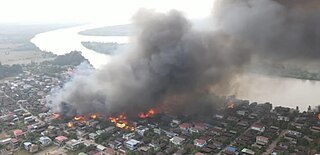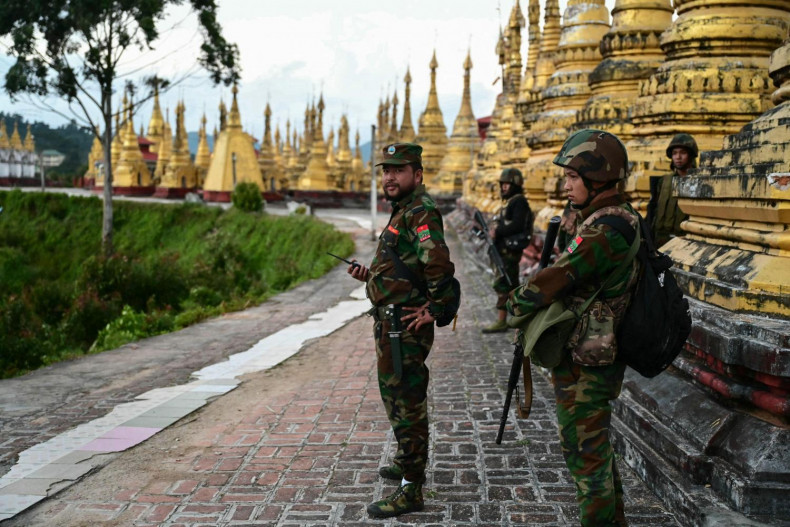Myanmar, known for its rich cultural heritage and natural beauty, has been enduring a long and complex internal conflict that has deeply affected its social, political, and economic landscape. This ongoing conflict is commonly referred to as the Myanmar Civil War, a multifaceted struggle that has spanned decades, involving the central government, the military, and various ethnic armed groups.
Understanding the historical background and current state of the Myanmar Civil War is crucial for those who plan to travel to the country, as the conflict significantly impacts the security situation and travel logistics.
Table of Contents
The Roots of the Myanmar Civil War
The Myanmar Civil War can be traced back to the country’s independence from British colonial rule in 1948. Although Myanmar gained freedom, the transition to a unified nation was far from smooth. Myanmar’s population is ethnically diverse, with a majority ethnic Bamar group and numerous ethnic minorities, including the Karen, Shan, Kachin, and Chin, among others. Following independence, tensions arose over political representation, resource allocation, and cultural recognition.
The country’s new government, largely controlled by the Bamar majority, struggled to integrate the interests of ethnic minorities into the national framework. Ethnic groups that felt marginalized formed their own armed resistance groups, seeking greater autonomy or independence from the central government. These early insurgencies, particularly by the Karen National Union in the 1950s, set the stage for the protracted conflict that would define the Myanmar Civil War.

Military Rule and Escalation of the Conflict
In 1962, Myanmar’s military, under General Ne Win, seized power in a coup, establishing a military dictatorship that would dominate the country for several decades. The military’s repression of ethnic groups and political opposition further escalated the Myanmar Civil War. Armed ethnic insurgencies continued to fight for autonomy, while the government launched brutal campaigns to suppress these groups, including civilian populations suspected of supporting the rebels.
The military’s approach to governance, particularly its control over all facets of society, left little room for political freedom, which only fueled resistance. The ethnic insurgencies became entrenched in Myanmar’s borderlands, with groups like the Kachin Independence Army and the Shan State Army continuing to challenge the central government’s authority.
The 1990s and the Search for Peace
By the 1990s, Myanmar’s military regime began negotiating ceasefire agreements with various ethnic armed groups. While these ceasefires allowed some groups to maintain autonomy and cease hostilities with the central government, the peace was often fragile. Many ethnic groups were still dissatisfied with the terms of the ceasefires, and violations were common, leading to continued low-level fighting in many regions.
At the same time, Myanmar’s military government worked to cement its control over the country by forming alliances with certain ethnic groups, while others remained in open rebellion. This created a patchwork of territories where the government’s influence varied, and the Myanmar Civil War remained unresolved.
The Transition to Semi-Democracy and Renewed Tensions
The early 2010s brought significant changes to Myanmar’s political landscape. In 2011, the military government initiated a series of political reforms, allowing for the release of political prisoners and the easing of restrictions on the press. This was seen as a step toward democratization, culminating in the 2015 elections, where Aung San Suu Kyi’s National League for Democracy (NLD) secured a landslide victory.
Despite the progress, the Myanmar Civil War was far from over. The military retained significant power through constitutional provisions, and ethnic insurgencies continued to hold territory in Myanmar’s border regions. The peace process remained fragile, with periodic flare-ups of violence.
The 2021 Coup and Renewed Conflict
In February 2021, Myanmar’s military staged a coup, overthrowing the civilian government of Aung San Suu Kyi. The military claimed that the 2020 election, in which the NLD won overwhelmingly, was fraudulent. The coup sparked massive protests and civil disobedience, which were met with violent repression by the military.
In response to the coup, ethnic armed groups, which had previously been involved in peace negotiations or ceasefires, renewed their resistance. Many groups, including the Kachin Independence Army and Karen National Union, resumed armed conflict with the military. The Myanmar Civil War thus entered a new and even more dangerous phase, as the military junta faces not only ethnic insurgencies but also widespread opposition from pro-democracy forces within the country.

Travel Considerations Amid the Myanmar Civil War
For travelers considering Myanmar as a destination, it’s important to understand the current situation surrounding the Myanmar Civil War and the risks associated with travel. While certain areas of Myanmar, particularly in the central regions and key tourist destinations like Yangon, Bagan, and Mandalay, may appear relatively stable, the ongoing conflict in peripheral areas makes travel in the country complex and potentially hazardous.
Regions such as Kachin, Karen, Shan, and Rakhine states, which have long been hotspots for ethnic armed conflict, continue to be unstable and should generally be avoided by travelers. These areas often experience sporadic fighting between ethnic militias and the military, and the safety of tourists cannot be guaranteed.
Moreover, the aftermath of the 2021 military coup has brought heightened uncertainty to Myanmar’s political landscape. Demonstrations and civil unrest have been widespread, with a heavy military presence in many urban areas. This situation has made the overall travel environment volatile and unpredictable.
For travelers who are determined to visit Myanmar, it’s crucial to monitor local news and stay informed about the latest security updates. Travel advisories from your home country, local government, or tour operators should be reviewed regularly, as the situation can change rapidly.
Conclusion
The Myanmar Civil War is a complex and ongoing conflict with deep historical roots, spanning over seven decades. While certain regions of Myanmar remain popular with tourists, the ongoing tensions and instability make it essential for travelers to approach their trips with caution and preparedness. By staying informed, adapting to changes, and respecting the sensitivities of the local population, it is possible to experience Myanmar while navigating the challenges of its turbulent political environment. However, understanding the nature of the conflict and its impact on daily life is crucial for anyone considering a visit to this fascinating but troubled country.
Click to read about our Myanmar Tours.





